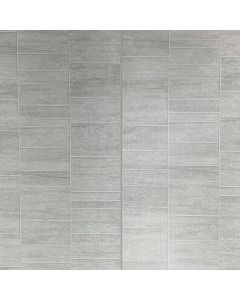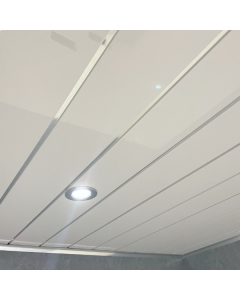How To Change A Tap Washer
The sound of water droplets hitting your kitchen sink can be infuriating and, coupled with water wastage; it can cost you, too. However, it doesn’t need to be this way, and you can solve the problem yourself by replacing the tap washer (note that if you have a modern tap, it may have a ceramic disc instead of a rubber washer).
This article explains how to change a tap washer – a handy skill that’ll help you save water and prevent irritating leaks in the future.
What is a tap washer?
Located inside the tap, a tap washer forms a watertight seal to prevent water flow when you turn off the tap. However, due to wear and tear over time, the seal erodes, making the washer much less effective. This allows water to flow out of the spout and cause the tap to drip.
Can I change a tap washer myself?
Yes - learning how to change a tap washer is one of the essential skills that can turn you from an amateur to a DIY expert who knows their stuff. It requires little effort, and will only take a few minutes to do, with little equipment.
What you need to change a tap washer
- Screwdriver
- Spanner
- Old cloth/ towel
- New tap washer
- Wrench (optional)
- Penetrating oil (optional).
How to change a tap washer
1: Turn off the water
Turn off the water supply to the tap. If you have an isolation valve underneath your tap, deactivate it to prevent water flow. If there’s no isolation valve, switch off the water at the mains. If you're replacing the washer in a hot tap, switch off the boiler and give the system time to cool down.
2: Block the plughole
As you’ll be handling small tap components, it’s best to block the plughole with an old towel or cloth. You can also spread a towel around the sink to prevent damage.
3: Remove the tap head
First, remove the tap headcover – you should be able to pop it up using a flat head screwdriver. You'll then see a small screw that you need to remove – lift the tap head to remove it. After removing the tap head, you’ll see the tap valve. Remove this with a spanner. If it’s too stiff, use a wrench to hold the tap in place as you loosen the valve.
4: Remove the tap washer
Once you’ve removed the valve, the tap washer will be visible and held in place with a small screw or nut, both of which are removable with a spanner or screwdriver. Note that some washers can be difficult to remove, especially those in older taps. If this is the case, apply some penetrating oil and allow it to soak before trying again.
5: Replace the tap washer
Once you've removed the old tap washer, replace it with the new one (note that it must be the same size). Finally, follow the previous steps in reverse order to reassemble the tap – you should now have a fully functional tap that doesn’t drip!
Why does my tap still drip after changing the washer?
If you’ve replaced the washer and the tap still drips, you may need to reseat the tap. Like tap washers, when valve seats sustain damage, they allow water to flow through, causing the tap to drip. Reseating the tap entails smoothing off the metal plate of the valve seat to improve the seal. You’ll need a special kit for this process, but unless you’re an experienced DIYer, we’d recommend hiring a professional plumber to complete the work.
Is it easy to replace a tap washer?
Unlike some bathroom DIY projects, such as creating recessed shelves, replacing a tap washer should be a relatively simple process for even the least practical amongst you. It’s even easier if you’re already planning a bathroom renovation, whether you’re planning on swapping wall tiles for waterproof bathroom wall panels or finally installing the Japanese bathroom you’ve always dreamed of, as you’ll have the tools required to hand.

























